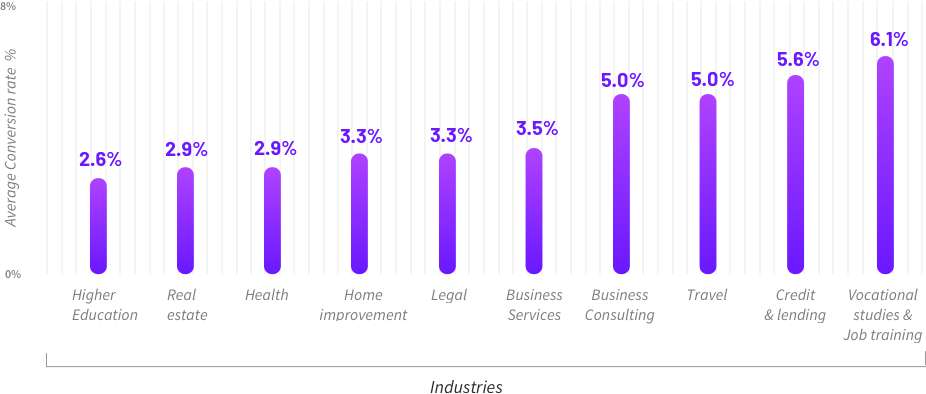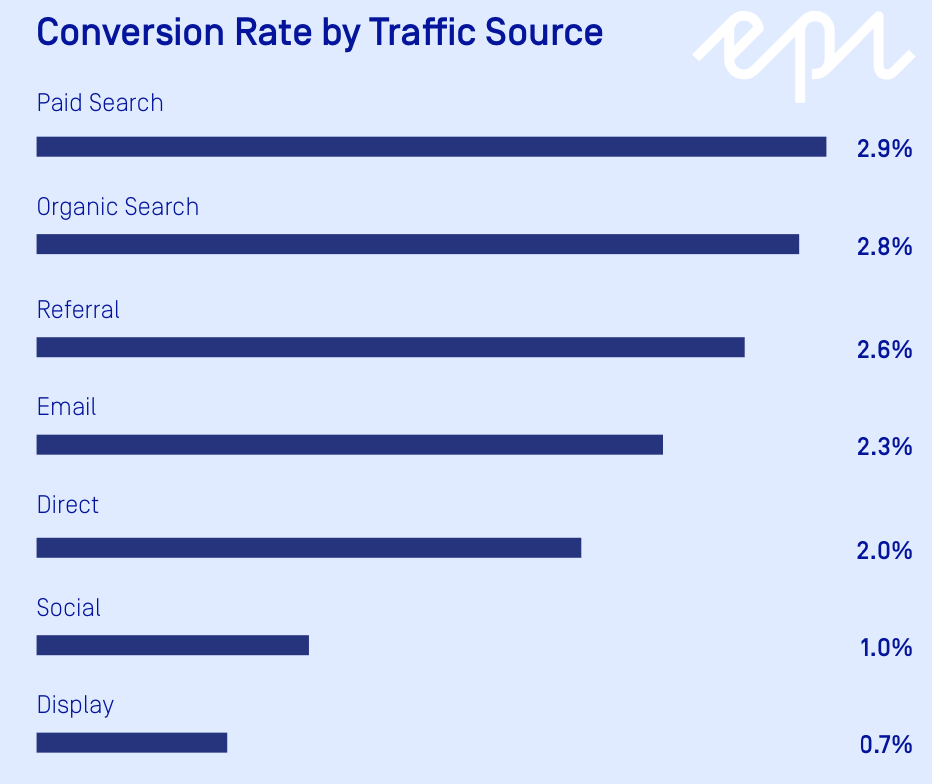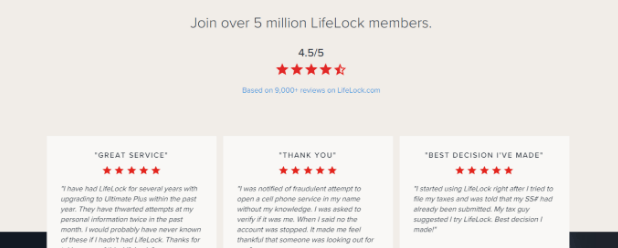How to Evaluate — and Improve — Your Landing Page Conversion Rates

Are your landing pages effective? Or is there something you could be doing differently that would allow you to make more conversions?
This can be a difficult question to answer. After all, you’re never going to convert 100% of the people who land on your page — but what percentage, exactly, should you be shooting for?
Unfortunately, there isn’t a single figure that represents a “good” conversion rate.
Understanding Landing Page Conversion Rates
Some online marketing experts believe you shouldn’t pay much attention to conversion rates at all. Your overall goal is always going to be to improve your conversion rate — if you set a specific target, there’s a chance that you’ll get complacent after you reach it.
That said, benchmarks are still useful. How else will you know if your current approach to landing page design is working or not?
WordStream ran a study that analyzed the conversion rates of landing pages on hundreds of sites: They found that the median rate is 2.35%.
It’s important to put this figure into context, though. The 2.35% average is for all industries combined.
When you look at industries separately, there’s a significant difference in the average conversion rate.

So, let’s say your page has a 5% conversion rate. If your ecommerce store belongs to the higher education, real estate or health industry, then that’s a solid number — around double the average.
But, if you’re in the credit/lending or vocational studies/job training industry, your conversion rate would actually be a little lower than average. This tells you there’s a lot of room for improvement.
You should be aware that the conversion rates are different for stores within the same industry as well. Industry leaders, such as Apple in the tech field or Nike in footwear, will have an easier time converting customers than smaller stores.
These well-known brands are already trusted by customers — it takes more effort for smaller stores to convince visitors that their products are worth a purchase. Generally, the bigger the store, the higher the baseline conversion rate.
Traffic Sources and Conversion Rates
It also matters where the traffic to your landing page is coming from.

Traffic from paid search and organic search is the easiest to convert, while traffic from social and display ads have a dismal average conversion rate of 1% or less.
This makes a lot of sense when you consider the mindset of the visitor in these different situations. When someone is coming from a search engine, they were already looking for something that’s relevant to their page. On the other hand, social and display ads might not be at all related to what they were already doing.
Another factor to consider is what action you’re trying to get the visitor to perform. Purchasing a product, even an affordable one, requires a considerable amount of commitment from the visitor. It takes time to fill out all their shipping and billing information, not to mention the fact that they’ll need to part with some of their hard-earned money in exchange for your product.
Instead of targeting sales, you may be trying to get visitors to sign up for your newsletter or download a free e-book. These actions are easier than making a purchase (and they’re free), so you can expect them to produce a higher conversion rate.
Sales and Conversion Rates
You must also consider the raw numbers when evaluating your conversion rate.
If your page has fewer than 10 conversions or 100 visits per month, then there’s just not enough information being collected for your conversion rate to tell you anything meaningful. In this case, you will likely see sudden spikes and drops in your conversion rate — this is due to random variance as opposed to true changes in how the average visitor responds to your page.
And even when you have enough conversion/visit volume to smooth out the variance, keep in mind that one stat never tells the whole story.
For example, you could have 50 sales conversions out of 1,000 visits one month and then 25 sales conversions out of 250 visits the next month. From a conversion rate perspective, this is excellent news: You doubled your rate from 5% to 10%! But from a revenue perspective, you made half as many sales for your store.
Here’s the bottom line: The average conversion rate for a landing page is 2.35%, but you should consider your average rate as high as 6% depending on the industry you belong to and your place in it.
Furthermore, you should adjust your expectations based on the source of your traffic, what you consider as a conversion action and the total numbers that are being used to calculate your conversion rate.
How to Improve Your Landing Page Conversion Rate
Again, no matter what your conversion rate currently is, you should always be striving to improve it.
Don’t get carried away, though. Some people obsess over their conversion rate and can’t help but to make small tweaks to their landing pages constantly.
Make sure not to give in to this habit yourself. Minor tweaks such as changing the font of your text or the color of a button won’t result in anything but small and short-term improvements in your conversion rate.
For significant and sustained improvement, you’ll need to do more than just minor tweaks. Also, experimenting with a few major changes requires less time and money in the long run than constantly updating your pages with small changes.
Try these four suggestions.
1. Make Your Offer Unique
Online stores in the same industry tend to make similar offers to potential customers. Just about every website for a law office on the internet offers visitors a “free consultation,” for instance.
If your landing page has a low conversion rate, a bland offer like that could be the cause of it. So, think outside the box.
If you provide a unique product or service that you can offer as a promotion, use that instead of something more generic. It should help you convince more people to click.
2. Add Social Proof
How can you convince visitors that your products are as good as you say they are?
Even if your copy is wonderfully written with persuasive appeals to both logic and emotion, on some level visitors are aware that you’re biased. You make money by selling these products, so of course you’re going to highlight everything good about them and leave out anything that’s potentially bad.
This is why your landing pages need social proof. Praise from someone who’s not making money from your products carries more weight than your own words.
Testimonials from people who’ve already purchased the product is compelling social proof and positive mentions from well-respected publications in your industry (such as Martha Stewart Livingfor household goodsor Wired for tech products) is even better.

3. Add Urgency
Urgency is another element you should include on your landing pages.
This can take many different forms. For one, consider the language you’re using on the page, especially in prominent places, such as your headline and inside your call-to-action buttons. Don’t just describe your offer — instruct your visitors to act on it! Phrases like “learn more,” “get started” and “try for free” have been shown to improve conversion rates.
Let’s say you’re offering a “20% discount” on your page. Simply tacking on a “Limited time” to the front of that “20% discount” line will make the offer more powerful. If it’s just a regular offer, the visitor will think that they can always return to it later if they don’t make a decision now. But if it’s a limited-time offer, they’ll feel pressure to move forward if they’re at all interested.
You can get creative and add a countdown clock to your page that shows the visitor how much time they have left to take advantage of your offer. This creates even more urgency, which leads directly to more conversions.
Another urgency trick: If you’re offering a free trial on your landing page, make the trial shorter rather than longer.
Kissmetrics compared the results of offering a 14-day trial versus a 30-day trial, and they found that the 14-day trial resulted in twice as many people using the product. Apparently, the shorter time frame encourages people to use the product as soon as possible, while 30 days gives them enough time to forget about it.

4. Test Your Change
You shouldn’t obsess over your conversion rate, but there’s a middle ground between that and doing nothing.
A/B testing is an excellent way to measure the performance of your landing page adjustments.
With an A/B test, you can show some visitors the original version of the page and other visitors the version of the page with changes over the same period of time. This allows you to see if your changes actually result in a higher conversion rate.
A unique offer, social proof, urgency and regular (but not too frequent) A/B testing — these are the key ingredients to a successful landing page.

Adam Ritchie
Adam Ritchie is a writer based in Silver Spring, Maryland. He writes about ecommerce trends and best practices for Shogun. His previous clients include Groupon, Clutch and New Theory.



